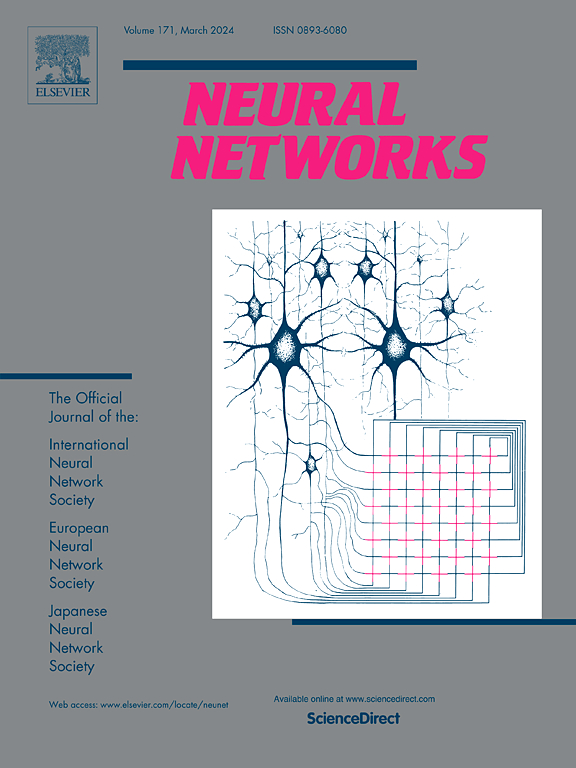Potential region attention network for RGB-D salient object detection
IF 6
1区 计算机科学
Q1 COMPUTER SCIENCE, ARTIFICIAL INTELLIGENCE
引用次数: 0
Abstract
Many encouraging investigations have already been conducted on RGB-D salient object detection (SOD). However, most of these methods are limited in mining single-modal features and have not fully utilized the appropriate complementarity of cross-modal features. To alleviate the issues, this study designs a potential region attention network (PRANet) for RGB-D SOD. Specifically, the PRANet adopts Swin Transformer as its backbone to efficiently obtain two-stream features. Besides, a potential multi-scale attention module (PMAM) is equipped at the highest level of the encoder, which is beneficial for mining intra-modal information and enhancing feature expression. More importantly, a potential region attention module (PRAM) is designed to properly utilize the complementarity of cross-modal information, which adopts a potential region attention to guide two-stream feature fusion. In addition, by refining and correcting cross-layer features, a feature refinement fusion module (FRFM) is designed to strengthen the cross-layer information transmission between the encoder and decoder. Finally, the multi-side supervision is used during the training phase. Sufficient experimental results on 6 RGB-D SOD datasets indicate that our PRANet has achieved outstanding performance and is superior to 15 representative methods.
RGB-D显著目标检测的电位区域注意网络
在RGB-D显著目标检测(SOD)方面已经进行了许多令人鼓舞的研究。然而,这些方法大多局限于挖掘单模态特征,没有充分利用跨模态特征的适当互补性。为了缓解这一问题,本研究设计了RGB-D SOD的潜在区域注意网络(PRANet)。具体来说,PRANet采用Swin Transformer作为主干,有效地获取两流特征。此外,在编码器的最高层配置了潜在多尺度注意模块(PMAM),有利于挖掘模态内信息和增强特征表达。更重要的是,设计了一个潜在区域注意模块(PRAM),合理利用跨模态信息的互补性,采用潜在区域注意引导两流特征融合。此外,通过对跨层特征进行细化和校正,设计了特征细化融合模块(FRFM),加强了编码器和解码器之间的跨层信息传输。最后,在训练阶段采用多方监督。在6个RGB-D SOD数据集上的充分实验结果表明,我们的PRANet取得了优异的性能,优于15种具有代表性的方法。
本文章由计算机程序翻译,如有差异,请以英文原文为准。
求助全文
约1分钟内获得全文
求助全文
来源期刊

Neural Networks
工程技术-计算机:人工智能
CiteScore
13.90
自引率
7.70%
发文量
425
审稿时长
67 days
期刊介绍:
Neural Networks is a platform that aims to foster an international community of scholars and practitioners interested in neural networks, deep learning, and other approaches to artificial intelligence and machine learning. Our journal invites submissions covering various aspects of neural networks research, from computational neuroscience and cognitive modeling to mathematical analyses and engineering applications. By providing a forum for interdisciplinary discussions between biology and technology, we aim to encourage the development of biologically-inspired artificial intelligence.
 求助内容:
求助内容: 应助结果提醒方式:
应助结果提醒方式:


